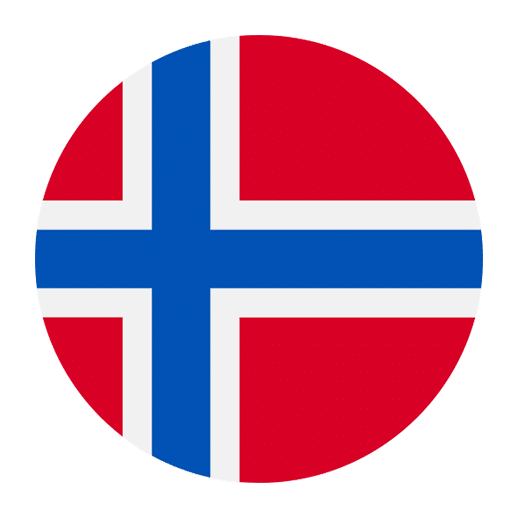Learning a new language can be an exciting yet challenging experience, especially when it comes to understanding verb conjugations. Norwegian, a North Germanic language spoken primarily in Norway, is known for its relatively straightforward grammar compared to other European languages. This article will delve into the world of basic Norwegian verbs and their conjugations, providing you with the foundational knowledge needed to start forming sentences and expressing actions in Norwegian.
Understanding Norwegian Verbs
In Norwegian, verbs are categorized into several groups based on their conjugation patterns. The two main categories are regular and irregular verbs. Regular verbs follow a predictable pattern, while irregular verbs do not. Norwegian verbs are also divided into different tenses such as present, past, and future. This article will focus on the present and past tenses, which are essential for basic communication.
Regular Verbs
Regular verbs in Norwegian are divided into two main groups: Group 1 and Group 2. Each group has its own set of conjugation rules.
Group 1 Verbs
Group 1 verbs are the most common and easiest to conjugate. These verbs typically end in “-e” in their infinitive form. To conjugate Group 1 verbs, you need to:
1. Remove the “-e” from the infinitive form.
2. Add the appropriate endings for present and past tenses.
Here are some examples:
– **To speak**: å snakke
– Present: snakker
– Past: snakket
– **To work**: å arbeide
– Present: arbeider
– Past: arbeidet
– **To like**: å like
– Present: liker
– Past: likte
Group 2 Verbs
Group 2 verbs have a slightly different pattern. These verbs typically end in a consonant in their infinitive form. To conjugate Group 2 verbs, you need to:
1. Add “-er” for the present tense.
2. Add “-te” or “-de” for the past tense, depending on the final consonant of the verb stem.
Here are some examples:
– **To read**: å lese
– Present: leser
– Past: leste
– **To live**: å bo
– Present: bor
– Past: bodde
– **To play**: å spille
– Present: spiller
– Past: spilte
Irregular Verbs
Irregular verbs in Norwegian do not follow the regular conjugation patterns and must be memorized individually. Despite this, many irregular verbs are commonly used, so becoming familiar with them is crucial. Here are some examples of irregular verbs:
– **To be**: å være
– Present: er
– Past: var
– **To have**: å ha
– Present: har
– Past: hadde
– **To do**: å gjøre
– Present: gjør
– Past: gjorde
Common Norwegian Verbs
To help you get started, here are some common Norwegian verbs along with their present and past tense forms. These verbs are essential for everyday conversations and will serve as a solid foundation for your Norwegian vocabulary.
Basic Action Verbs
– **To go**: å gå
– Present: går
– Past: gikk
– **To come**: å komme
– Present: kommer
– Past: kom
– **To see**: å se
– Present: ser
– Past: så
– **To hear**: å høre
– Present: hører
– Past: hørte
– **To eat**: å spise
– Present: spiser
– Past: spiste
– **To drink**: å drikke
– Present: drikker
– Past: drakk
Common Auxiliary Verbs
Auxiliary verbs are used in combination with main verbs to express different tenses, moods, or voices. Here are some common auxiliary verbs in Norwegian:
– **To be able to / can**: å kunne
– Present: kan
– Past: kunne
– **To want**: å ville
– Present: vil
– Past: ville
– **To shall / will**: å skulle
– Present: skal
– Past: skulle
– **To must**: å måtte
– Present: må
– Past: måtte
Conjugating Verbs in Sentences
Now that you have a basic understanding of Norwegian verbs and their conjugations, let’s look at how to use them in sentences. Forming sentences with the correct verb conjugation is crucial for clear and accurate communication.
Present Tense Sentences
The present tense is used to describe actions that are happening now or occur regularly. Here are some examples:
– **I speak Norwegian**: Jeg snakker norsk.
– **She reads a book**: Hun leser en bok.
– **They drink coffee**: De drikker kaffe.
Past Tense Sentences
The past tense is used to describe actions that have already happened. Here are some examples:
– **I spoke Norwegian**: Jeg snakket norsk.
– **She read a book**: Hun leste en bok.
– **They drank coffee**: De drakk kaffe.
Using Auxiliary Verbs
Auxiliary verbs can change the meaning of the main verb to express abilities, desires, or necessities. Here are some examples:
– **I can speak Norwegian**: Jeg kan snakke norsk.
– **She wants to read a book**: Hun vil lese en bok.
– **They must drink coffee**: De må drikke kaffe.
Tips for Learning Norwegian Verbs
Learning verbs and their conjugations is a vital part of mastering Norwegian. Here are some tips to help you in your learning journey:
Practice Regularly
Regular practice is key to retaining new information. Try to incorporate Norwegian verbs into your daily routine by creating sentences, speaking with native speakers, or using language learning apps.
Use Flashcards
Flashcards are a great way to memorize verbs and their conjugations. Write the infinitive form on one side and the present and past tense forms on the other. Review them regularly to reinforce your memory.
Watch Norwegian Media
Watching Norwegian movies, TV shows, or listening to Norwegian music can help you get used to the natural flow of the language and familiarize yourself with common verbs and their conjugations.
Engage in Conversations
Practice speaking with native Norwegian speakers or fellow learners. Engaging in conversations will help you apply what you’ve learned and improve your fluency.
Keep a Journal
Write a daily journal in Norwegian. Describe your day, your thoughts, or any activities you did. This practice will help you use verbs in context and improve your writing skills.
Conclusion
Understanding basic Norwegian verbs and their conjugations is a fundamental step in learning the language. By familiarizing yourself with regular and irregular verbs, practicing their conjugations, and using them in sentences, you will build a strong foundation for further language acquisition. Remember to practice regularly, use various learning tools, and engage with the language as much as possible. With dedication and persistence, you’ll be well on your way to becoming proficient in Norwegian. Lykke til! (Good luck!)

